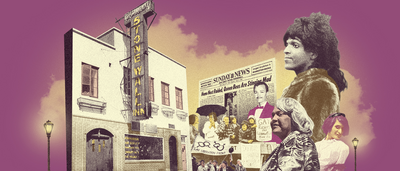We’ve seen it over and over again: resistance to marginalized groups who demand to live free from harm, to enjoy their rights as citizens or to be heard and seen—and resistance to those who simply acknowledge these groups’ humanity and treat them with respect.
It shouldn’t come as a surprise: We’ve seen scornful responses to progress throughout history. If the idea of continuous, uninterrupted racial progress is a myth, then the same must be true about the advancement of other marginalized groups.
As we work to promote diversity, equity and inclusiveness, we can’t emphasize enough the need for educators to protect and support LGBTQ students.
However, we realize there are many barriers. Parents are withdrawing students from schools that prioritize equity. People have signed petitions and led protests and rallies in response to curricula that is inclusive of LGBTQ identities.

LGBTQ history and perspectives belong in the classroom. Learn how to incorporate them into yours when you listen to our podcast Queer America.
And as the 50th anniversary of the pivotal Stonewall Uprising approaches this summer, read in the Summer 2019 issue of Teaching Tolerance how this event—and the activism that preceded and followed it—is relevant to us all, including your students.
In February, when a school district in the Sacramento area adopted a curriculum that included LGBTQ leaders in its updated textbooks, it was met with contempt from some community members. They showed up at a meeting of the school board, which had unanimously voted to adopt the curriculum, to share their anger about the decision.
One community member told the board, “You don’t have the power to simply indoctrinate students to believe the way you do!”
A parent accused the board of “raping the innocence of our children.”
And just three months later at another school district nearby, about 600 parents pulled their students from school in a district-wide “sit out” to protest the school board’s adoption of a K–5 curriculum that includes historical figures who identify as lesbian, gay, bisexual or transgender.
In March, more than 200 protestors gathered at the California State Capitol to push back against the state’s proposed comprehensive sex education, which included lessons on gender fluidity. Families who protested said the framework gives students “too much information, too soon.”
Also in March, a transgender student in Georgia was told he could not enter the running for prom king and had to be placed on the prom queen ballot instead.
In April, a group of about 60 Kansas high school students walked out to protest a trans schoolmate who’d been using the restroom that aligned with their gender identity.
These incidents aren’t anomalies—and they will probably continue to happen at schools across the nation.
They’re not limited to community responses, either. Erasure and other harm that is done to the LGBTQ community comes from the most powerful figures in government. Testifying before Congress last month, Education Secretary Betsy DeVos expressed indifference about the safety of young LGBTQ students.
A U.S. representative asked DeVos whether she knew, when her department rolled back policies protecting trans students back in 2017, that stress due to harassment and discrimination can lead to lower attendance and grades and an increase in depression and anxiety. The secretary’s response fell flat.
“I do know that,” she said during the April 10 hearing. “But I will say again that OCR [Office for Civil Rights] is committed to ensuring that all students have access to their education free from discrimination.”
When the U.S. Secretary of Education isn’t intentional about creating a just and equitable education in a safe environment for all students, the message is clear: Some students don’t matter.
But we know they do.
We See You
While news about dehumanizing policies and resistance to LGBTQ education is disheartening, we know that this fight is necessary. Obstacles will be there, but educators who do this work understand the end game: This is the only way to ensure a healthy environment where all students can become active participants in our diverse democracy.
We know you’re aiming to make your school culture, curriculum and policies inclusive of all identities and gender expressions. You’re using gender-inclusive language like the educators we heard from in California, who do so while facing the criticism of their health education framework. You’re acknowledging and honoring students’ identities by using the correct pronouns. You’re creating safe spaces for LGBTQ students to organize.
We are optimistic when state officials offer protections or guidance to encourage LGBTQ inclusiveness. For example, California and New Jersey both have recently adopted laws that require schools to teach about LGBTQ history. But we know this work takes more than laws and policies.
We must educate students and help them build community. This isn’t just about school; it’s about creating a safe and loving world. So it’s not “too much” for young people, and it’s never too soon.
So, keep teaching about, advocating for, encouraging and valuing the lives of LGBTQ students.
We’ve got your back.
Dillard is a staff writer for Teaching Tolerance. Follow her on Twitter @CoshandraD_TT.


0 COMMENTS